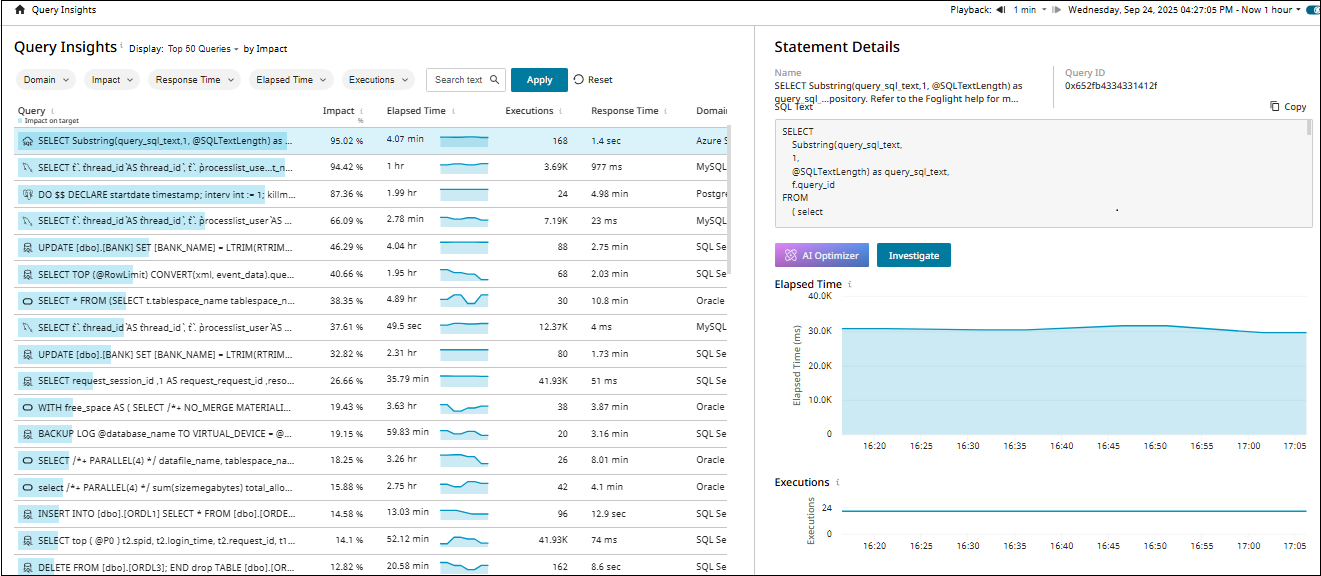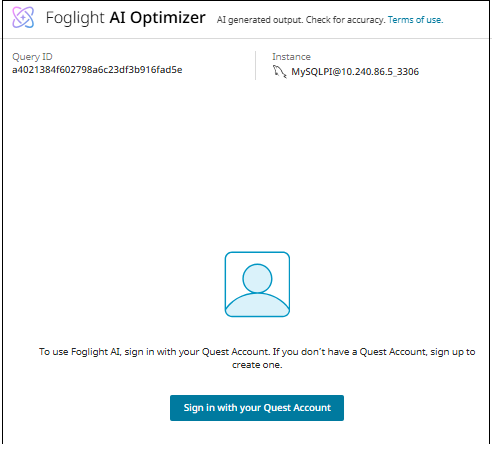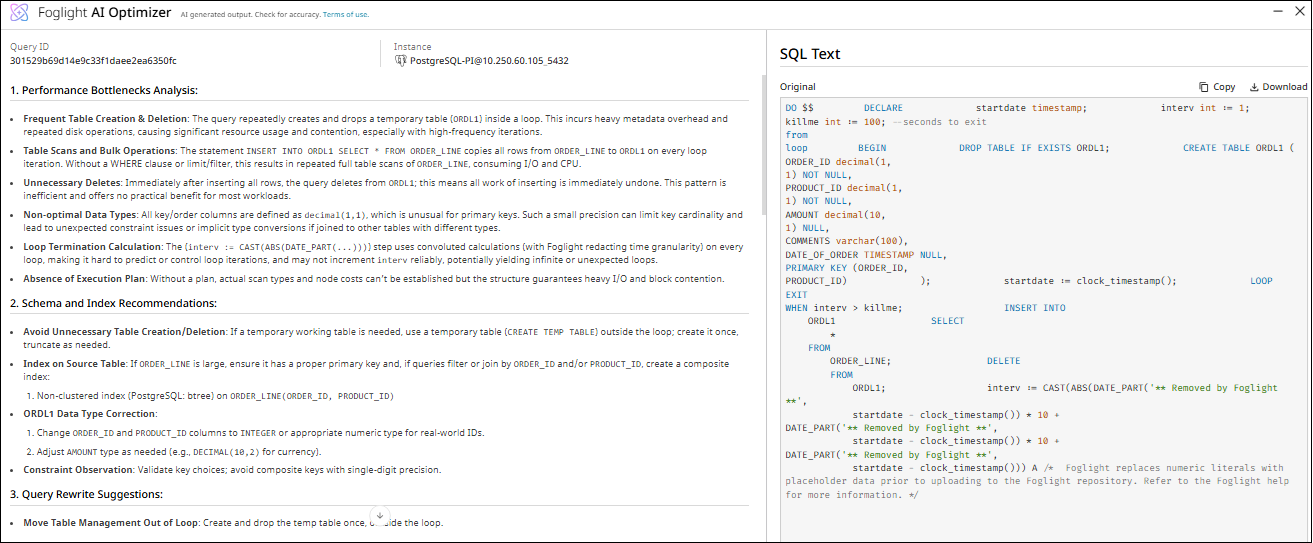Using AI Optimizer
Foglight AI Optimizer uses machine learning to automatically analyze database performance and provide intelligent optimization recommendations, reducing manual tuning effort while improving performance.
Available in Foglight 8.1.0, this feature supports SQL Server, Oracle, Azure DB, DB2, SAP ASE, PostgreSQL, and MySQL.
To access AI Optimizer, click Query Insights on the Welcome page, or navigate to Databases > Query Insights in the left navigation pane.
You can access the AI Optimizer from any location where the AI Optimization link is displayed.
Key Benefits
- Delivers faster query execution and improved response times through intelligent optimization.
- Reduces system downtime by proactively identifying and preventing performance issues.
- Increases team productivity by automating routine tuning tasks and manual analysis.
- Cuts operational costs through optimized resource usage and delayed hardware upgrades.
- Minimizes business risk by ensuring consistent database availability and performance.
To use the AI Optimizer feature, you need a license. To generate a license, refer to Generating a License.
To use AI Optimizer:
Navigate to Databases > Query Insights in the left pane. The Query Insights page displays the list of all queries.

Click on the required query from the list to display the statement details.
You can access this Al Optimizer from any location where the list of queries appears.
Click AI Optimizer. The Foglight AI Sign in screen appears.

To use AI Optimizer, you must sign in with your Quest Account. If you do not have a Quest Account yet, sign up to create one.
Click Sign in with your Quest Account.
If you do not have a license, then the status displayed is disabled. Click Contact Sales to request a license. If your license exists but the feature is not enabled, an error message will be displayed.
The Foglight AI Optimizer screen displays the query details for the selected query.
This screen displays the following details:
- Performance Bottlenecks Analysis - Identifies issues like inefficient table operations, unnecessary scans, and suboptimal data types.
- Schema and Index Recommendations - Provides specific solutions including proper indexing strategies and schema optimizations.
- Query Rewrite Suggestions - Offers concrete SQL code improvements with rewritten examples that eliminate loops, optimize table management, and improve query structure for better performance.
- Database and Server-Level Recommendations - Suggests database configuration changes like statistics updates, index maintenance, isolation levels, and compatibility settings.
- Next Steps - Provides a structured testing and monitoring approach to validate optimizations and measure performance improvements.

